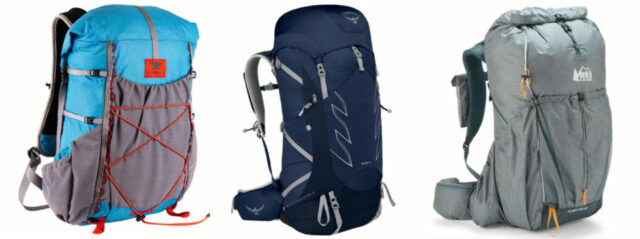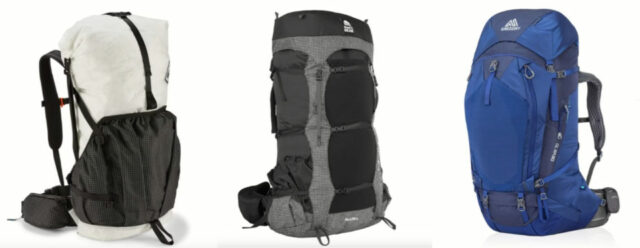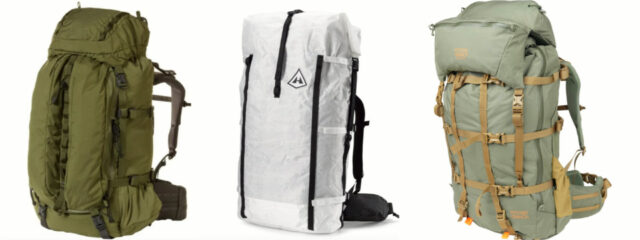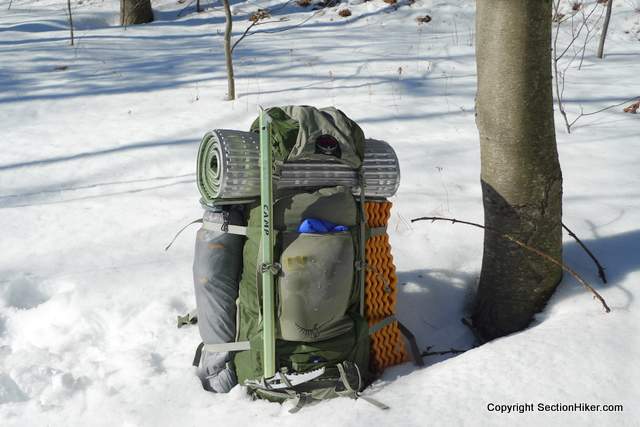How big in terms of backpack volume should you look for in a
- daypack (1/2-1 day)
- weekend backpacks (1-3 days)
- weeklong backpacks (3-7 days),
- expedition backpacks (more than a week)
Here are some backpack volume guidelines and advice for shopping for backpacks in the appropriate size range.
How Backpack Volume is Measured
Most major backpack manufacturers measure the volume of their backpacks by adding up the total volume of the closed storage on their packs, including the main compartment, pockets, and hip belt pockets that can be closed or zippered shut. However, many smaller manufacturers use a different method and include open pockets like side water bottle pockets or rear mesh pockets in addition to the closed storage. This can make weight-to-volume comparisons a little misleading when comparing packs from different manufacturers When in doubt, contact the manufacturer to ask what method they use to measure backpack volume.
Hiking Daypack Sizes (1/2 day to full-day hikes)
Most daypacks range from 15 liters to 35 liters on the high-end. While a smaller-sized 15-25 liter backpack is usually sufficient for 1/2 day hikes, you’ll want a larger pack in the 25-30 liter range for all-day hikes or winter to carry extra water, food, clothing, and emergency gear. Many backpacks under 25 liters in size will not have hip belts, and they’re not necessary if you’re carrying less than 15-20 pounds of food, water, and clothing. Once you get above 20 pounds in gear weight, you should look at backpacks with hip belts since the weight will sit on your hips and not your shoulders, making it much easier to carry. This is also true when considering backpacks with vest-style shoulder straps: when you have to carry a load over 20 pounds in weight you’ll want a hip belt. Check out our recommended hiking day packs.
The daypack category also includes hydration packs, which can be a good option. Ensure you have sufficient volume to carry your extra clothing and gear since the hydration reservoir can take up considerable space.

If you’re a winter day hiker and snowshoer, I’d recommend sizing up to a 35-40 liter backpack capable of carrying snowshoes, microspikes, water, food, and bulkier insulated clothing. You need a beefier backpack than a small daypack to carry snowshoes (which weigh 5 lbs alone) or additional traction aids.
Weekend Backpacking Packs (1-3 Nights)
Most daypacks are unsuitable for overnight and weekend backpacking trips because they require carrying much more gear, such as a sleeping bag/quilt, sleeping pad, sleeping clothes, tent/shelter/hammock, stove, cooking pot and utensils, and more food.

All this extra stuff requires more space, even if you take a minimalist or ultralight approach to gearing up with highly compressible gear, including down sleeping bags or quilts. The sweet spot for weekend trips is a backpack with 40 to 50 liters of volume for one to three nights and enough external straps to attach especially bulky gear to the outside of the backpack. Rolltop packs or those with top lid pockets are both suitable—which you choose is just a matter of preference.
Weeklong Backpacking Packs (3-7 Nights)
The biggest difference between shorter weekend and multi-day backpacking trips is the need to carry more food and possibly more technical gear, depending on the kind of activities or climate you’ll be hiking in.

For multi-day trips, you’ll need 50 to 70 liters of backpack volume, but if you go ultralight, use compressible gear that doesn’t take up a lot of space, or can resupply frequently, like on a thru-hike, you might be able to get with a lower volume pack in that range.
Expedition Backpacks (More than one week)
Expedition backpacks are the behemoths of the backpacking world and range in size from 80 liters up to 110 liters or more. They’re designed to hold a mammoth amount of food and gear, usually for professionally guided mountaineering trips. If you’re going on a trip like this, it’s probably worth asking your guide for backpack recommendations. Most professional guide services have gear you can rent to avoid a major purchase for a single use.

External Attachments
If you plan to carry a lot of bulky gear, you don’t have to carry all of it inside the closed storage of a backpack. Bulky sleeping pads, tents, rain gear, snowshoes, and water bottles are commonly stuffed into exterior pockets or attached to the sides, back, or bottom of a backpack with webbing or compression straps. This lets you use the same backpack for medium and longer trips without needing to buy a second larger pack to carry your extra gear.

See Also:
SectionHiker is reader-supported. We only make money if you purchase a product through our affiliate links. Help us continue to test and write unsponsored and independent gear reviews, beginner FAQs, and free hiking guides.
